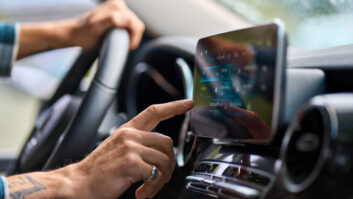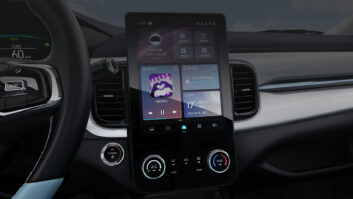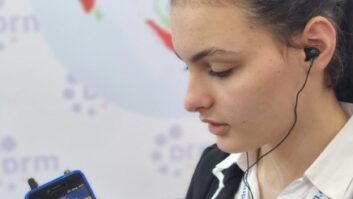ERLANGEN, Germany� Researchers at the Fraunhofer Institute for Integrated Circuits are now offering device manufacturers a new software package with a decoder for DRM+, which was developed for digital transmissions in the FM band and rounds out the DRM standard.

�In a sense, FM radios are true antiques: for decades, they have relied on traditional analog signals. Digital transmission, however, makes for a far superior listening experience. Rather than being sent over the airwaves in analog form, the information is broadcast digitally. An antenna picks up the signal, and software embedded in the radio converts it back into music. The result: enhanced audio signal quality,� the company writes in apress release.
�In the digitization of FM frequencies, many countries are moving to the new standard, DRM � short for Digital Radio Mondiale. India, with over a billion potential radio listeners, is but one example. The digital information is transmitted via the same frequencies that radio broadcasters have used for analog transmission for decades,� the release continues. �Up to now, however, the introduction of the DRM standard has been delayed because broadcasters are waiting for device manufacturers to build DRM-capable radios. The manufacturers, in turn, have been holding back production until the broadcasting companies switch over to digital transmission signals.��
After developing receiver software for the DAB standard it was a logical step for Fraunhofer IIS to take a comparable approach to DRM: �As with our established DAB software package, we have now developed receiver software for the complete DRM standard,� said Thomas Dettbarn, scientist at Fraunhofer IIS. �The radio manufacturers can build on a proven modular system, thus shortening their development times and, in turn, reducing their costs. This allows them to focus on integration and application development.�
A central component of the modular system developed by Fraunhofer IIS, and the heart of any digital radio, is the baseband decoder. This converts the transmission signals received from the broadcaster into digital data streams. The DRM standard uses the new audio codec MPEG xHE-AAC � the successor to HE-AAC v2, which has a track record of success in DRM and DAB+. Numerous service decoders for the representation of text, images, and other value-added information are available as additional components of the modular DRM system. Of special note here is the text information service Journaline: similarly to teletext on TV, it presents specific information from the broadcaster that the users can read while listening to their favorite station. This may be news, weather reports, sports results, or station contact details for participating in the radio program.
Journaline is also part of the DRM Emergency Warning Functionality. In the case of an alert, EWF enables DRM receivers to switch automatically over to the emergency program, in which the audio announcement is accompanied by text giving multilingual details and instructions on looking up further needed information.
For manufacturers, Fraunhofer�s modular approach to DRM means that they can select various features according to their own radio designs and compose the functional range of their devices as required.






